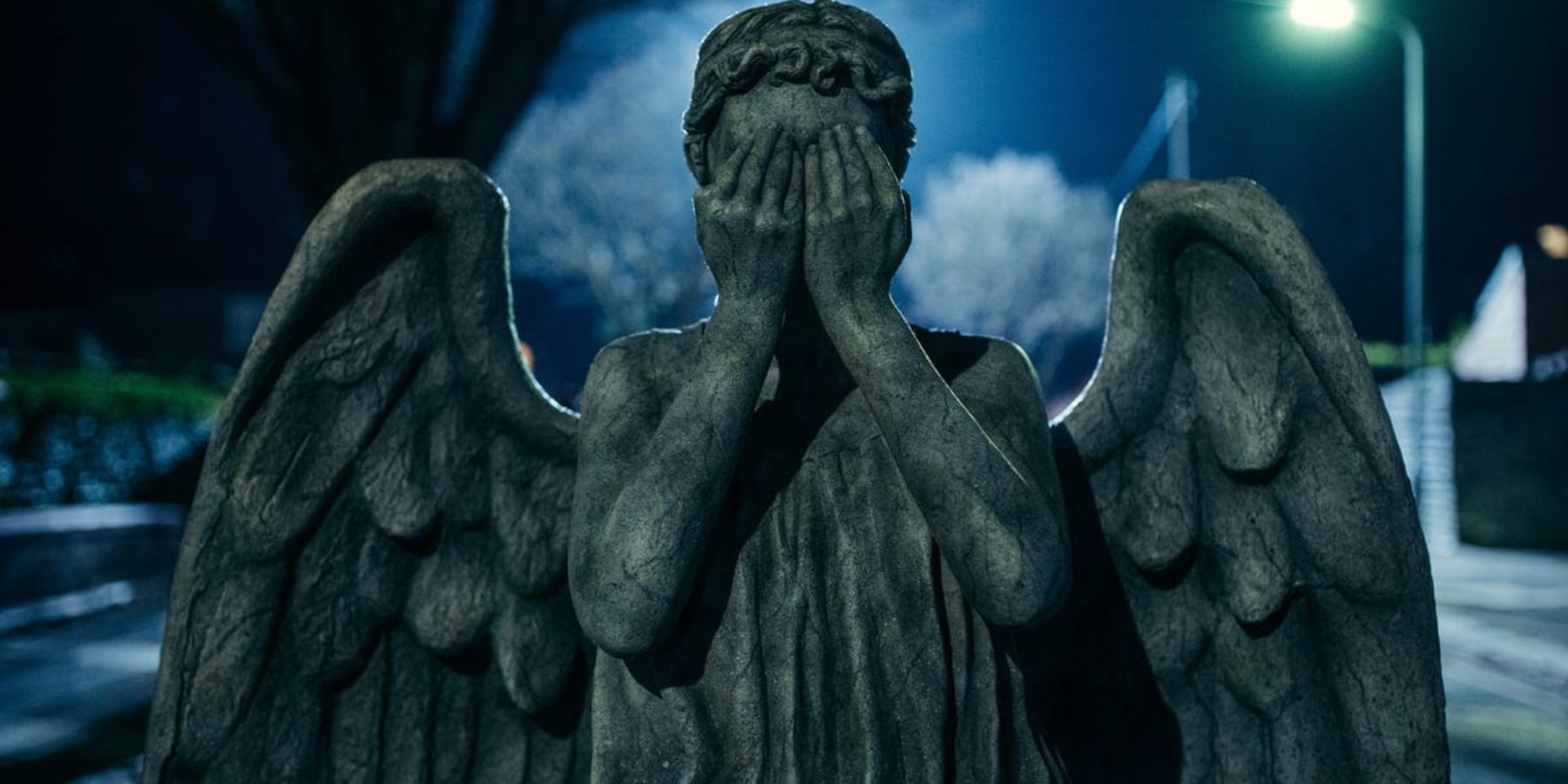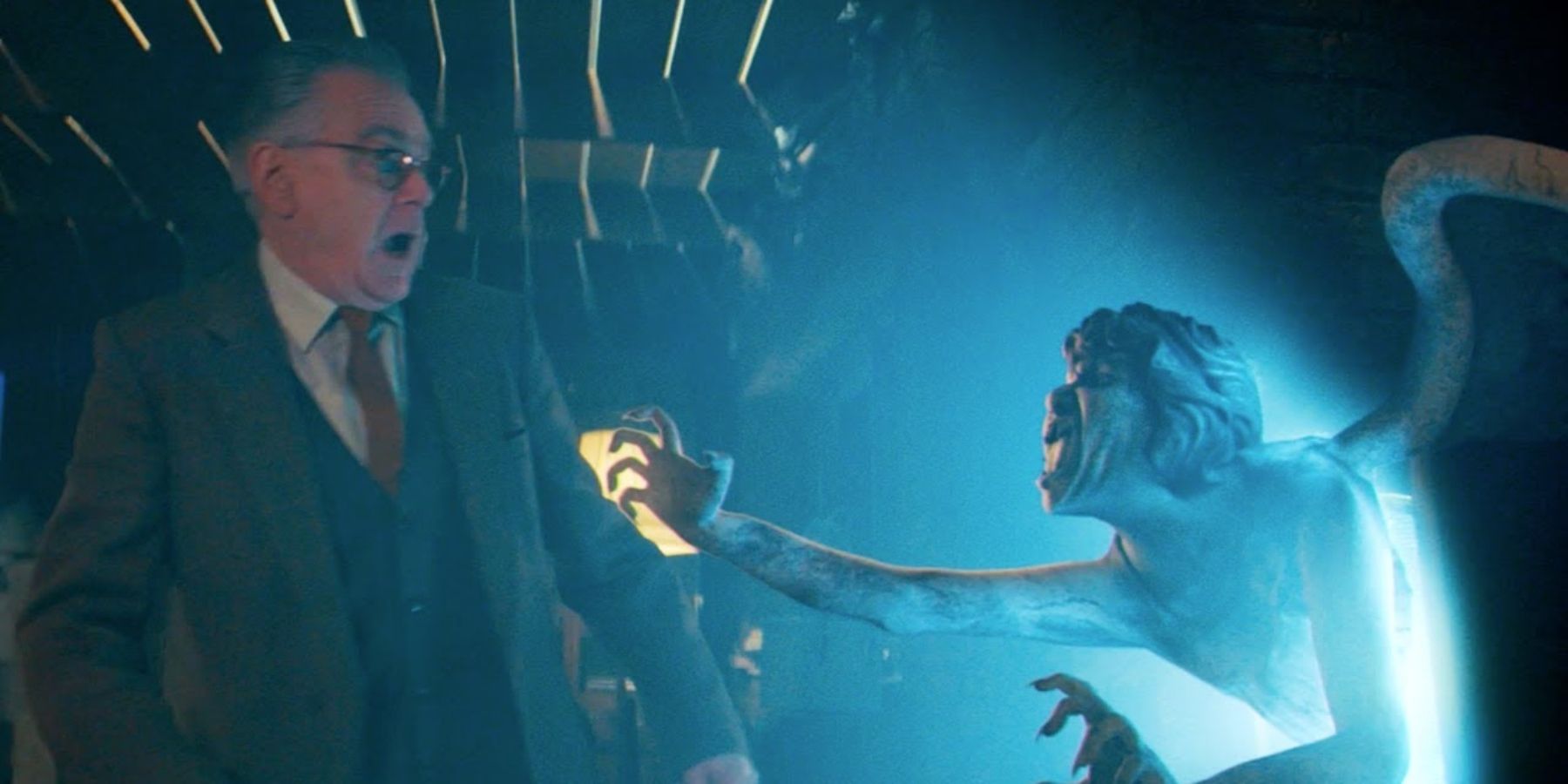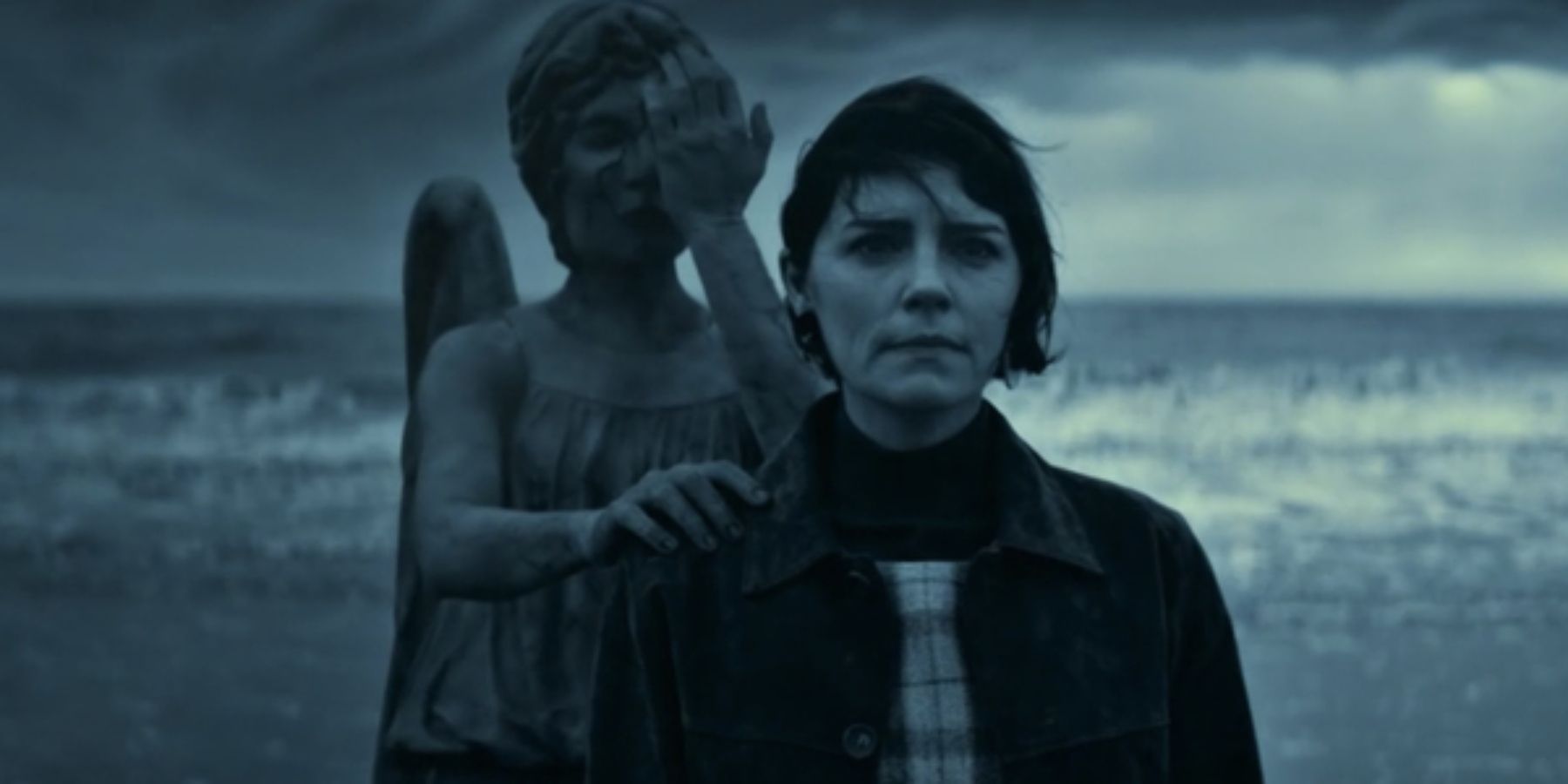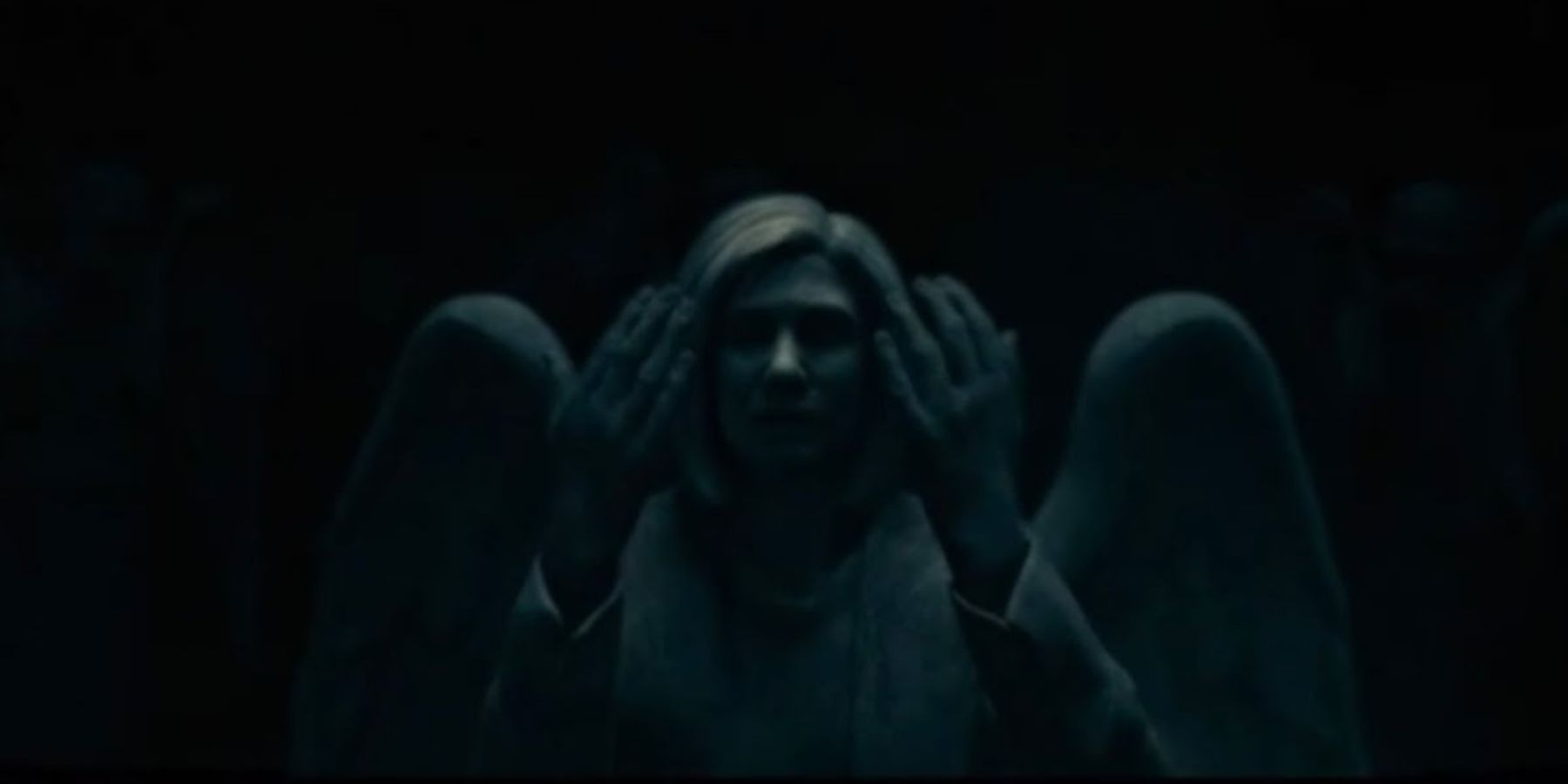This review contains spoilers for Doctor Who Series 13, Episode 4. Series 13 of Doctor Who may have gotten off to a strong start with the exciting introduction of the Flux miniseries, but each following episode has only made more and more missteps that kill the season’s initial momentum. And unfortunately, the same can be said of this week’s installment as well.
Part 4 of the Doctor Who: Flux miniseries, titled “Village of the Angels”, is co-written by showrunner Chris Chibnall and Maxine Alderton, the writer responsible for Series 12’s “The Haunting of Villa Diodati”. Alderton’s previous foray has been hailed by fans and critics alike as one of the high points of the Chibnall era thanks to its interesting premise, strong character writing, and downright chilling antagonist. But alas, these are all traits that “Village of the Angels” sadly lacks.
Cracks In The Statues
The Weeping Angels are without a doubt the most iconic monsters introduced in modern Doctor Who. They were originally introduced back in 2007 with the Series 3 episode “Blink”, written by Steven Moffat — one of the most beloved episodes in the franchise’s history. The idea behind the Weeping Angels is a simple one: they’re predators who disguise themselves as stone statues and can only move when they aren’t being observed. However, they can move at incredible speeds and send their victims back in time with a single touch, feeding on their temporal energy as a result. Because of this, the Weeping Angels can attack a victim within the literal blink of an eye, making them some of the most dangerous monsters in all of Doctor Who.
But despite their ingenious concept, the Weeping Angels are also victims of their own success. After becoming showrunner in 2010, Moffat brought back the Weeping Angels in Series 5’s “The Time of Angels”, which attempted to escalate the Angels’ threat even more. They gained additional backstory and new abilities, and even gained the ability to speak by stealing the voices of their victims. However, this approach arguably backfired — by providing more information about the Weeping Angels and making them feel less alien, they lost some of the mystery that made them so frightening and intriguing in the first place. By the time of the 2012 episode “The Angels Take Manhattan”, the Weeping Angels had been reduced to shadows of their former selves.
The Weeping Angel scene in the Series 13 premiere proved to be an effective “back to basics” depiction of the popular monsters, capturing the same atmosphere that permeated “Blink” without getting bogged down by the retcons of later episodes. Unfortunately, “Village of the Angels” takes the exact opposite approach. Instead of scaling back the Angels’ abilities and lore to be more in line with their debut appearance, Chibnall and Alderton attempt to escalate the threat even more than Moffat did. But much like the Daleks, constant attempts to one-up previous Weeping Angel stories only serve to cheapen their appeal.
Fallen Angels
Aside from granting the Weeping Angels even more heretofore-unknown abilities — such as the power to instantly kill anyone who’s touched by an Angel twice, something that directly contradicts previous episodes — the episode’s biggest misstep is how it further humanizes the Angels. In “Blink”, part of what made the Weeping Angels so frightening was how eerily inhuman they were. Though they were intelligent, they never spoke. They couldn’t be reasoned with, and they didn’t have any personalities or ideals that could make them more relatable. They were entirely alien and unknowable, and that made them all the more terrifying. However, “Village of the Angels” goes against that concept by having the Weeping Angels speak even more than they did in “The Time of Angels”, making them feel more reminiscent of standard monsters like the Daleks or Cybermen.
Most baffling of all, the episode reveals that the Weeping Angels — or at least, a specific group of them — have been working for the mysterious Division all along. And though this reveal ties the episode into the wider Flux storyline, it also flies in the face of everything that’s been previously established about the Weeping Angels. In previous episodes, the Weeping Angels have been motivated solely by their desire to feed on temporal energy. They’re apex predators who have never seen fit to cooperate with other species. Even in other team-ups of the Doctor’s greatest foes, like in Series 5’s “The Pandorica Opens”, the Weeping Angels have never taken part. But now, it’s revealed that the Weeping Angels are operatives of the Division, an organization seemingly controlled by the Time Lords. Why they’d want to work for the Division or what they’d have to gain is never even hinted at.
To make matters even more confusing, the episode ends on a cliffhanger with the Doctor being captured by the Weeping Angels and taken back to the Division, only to be transformed into a Weeping Angel herself in the process. Why this happens is not explained, and it’s certainly not a power the Angels have exhibited in the past. Perhaps later episodes will provide more information to help this twist make more sense, but it’s not looking likely.
Too Much Plot, Not Enough Time
The concept of a six-episode miniseries telling a single continuous story could have easily led to some of the most epic, exciting storytelling of the revived Doctor Who series. But instead of leaning into the serialized format like the classic series, Flux has attempted to split the difference, balancing plot-heavy episodes like “Once, Upon Time” with more standalone adventures like “War of the Sontarans”. This ends up making both the individual episodes and the season as a whole worse as a result — stories that could have been fun self-contained episodes are bogged down by being forced into a larger narrative, while the larger story arc is weakened by multiple episode-length detours that do nothing to resolve the ongoing mysteries.
“Village of the Angels” could have been a fun, creepy standalone episode that restored the Weeping Angels to their former glory. But instead, it’s a bland retread of previous Weeping Angel stories that introduces even more needless retcons to detract from the Angels’ mystique. And despite the best efforts of the main cast to elevate a weak script, there aren’t enough character moments amidst the chaos to give this clumsy story an emotional center. With only two episodes left in the Flux miniseries and so many mysteries left unsolved, any hope that Chibnall will stick the landing with this ambitious storyline is dwindling quickly.




